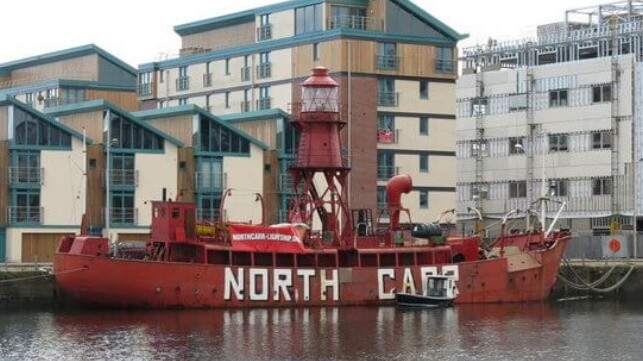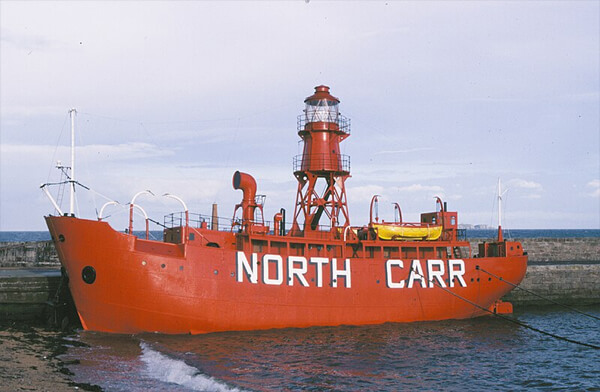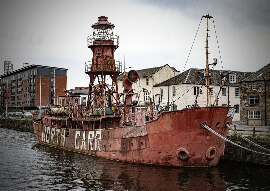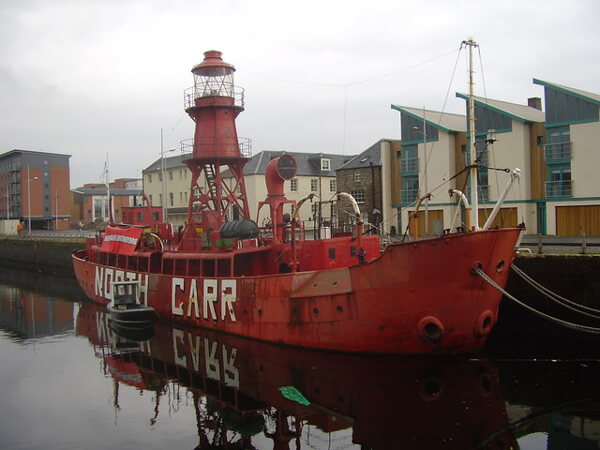Scotland’s Last Lightship is Falling Apart and Will be Deconstructed

Scotland’s last lightship, and one of the final surviving examples of the unique and critical part of navigation safety, is in critical condition and likely to be dismantled starting in 2024. The charitable organization that controls the vessel known as North Carr, reports it determined given the state of the vessel, there is no alternative except to scrap the ship.
“Over the past five years, it has become apparent the hull has suffered a significant level of decay,” wrote Taymara, a Scottish charity founded in 2007 to utilize the founders’ maritime skills and volunteering for the benefit of the community. The charity acquired the lightship in 2010 for £1 million intending to stabilize it, ultimately securing a permanent berth, and raising money for its full restoration. They contend over the past 13 years they spent £70,000 on the ship and countless volunteer hours.
Built in 1933, she was only one of two light vessels in Scotland, serving as an important marker for navigation. She is just 101 feet in length (30.78 meters) and has no propulsion. She had to be towed to her service points. In addition to her light, she was outfitted with a power horn used to warn ships. Her light is situated 40 feet above sea level and the directional foghorn reportedly has a range of ten miles. It was known to deafening.

In 1988 while she was still in good repair a decade after retirement - Timwether photo in public domain
She is credited as providing a critical service during World War II when she was repositioned to a point between the Mull of Kintyre and the Mull of Galloway. Her light was only lit at pre-arranged times for security, but she provided a vital navigation point both for the Arctic convoys and the troopships heading into and out of the Clyde.
Returning to normal service after the war, in 1952, a major refit was undertaken, installing new diesels and generators. A radio beacon was installed in 1954 and two years later the Watch House was built.
The coast of Scotland was battered by one of the worst gales in history in December 1959 and the North Carr at about 2:00 a.m. in the midst of the storm issued a distress call after breaking her moorings. Most of the RNLI lifeboats were unable to leave the harbor due to the storm, but the Broughty Ferry crew was in a more sheltered station and launched their boat, Mona, in a desperate attempt to save the crew of the North Carr. The Mona, however, was lost in the storm, with the bodies of seven of her crew found on the beach at Buddon Ness the following morning. The light vessel crew were eventually rescued by an RAF helicopter.
The lightship was decommissioned in 1975 and laid up at Leith intended for scrap. However, the following year she was purchased for display and in 1977 opened to the public. In 1989, financial and technical problems resulted in her closure. She reopened in 1992, but was sold in 1995 to Dundee City Council and 15 years later to the charity. She is registered with National Historic Ships UK.

She is decaying with the charity saying she becoming unsustainable (Taymara)
In recent years, the North Carr has suffered damaging leaks, the spread of extensive rust, and leaks in the hull which volunteers repaired with emergency cement boxes and other means. The vessel is largely original from 1932 and now the charity reports the time has come “when no more can be done.” They fear her deteriorated state will lead to her becoming unsustainable with potentially dire consequences.
They announced this week that they believe there is no other option but to deconstruct the North Carr lightship, setting January 5, 2024, as a deadline for alternate proposals. Taymara notes that it is an arbitrate date for the start of the deconstruction and it will be a lengthy planning process before actual work begins.
The lightship retains much of her original equipment including her lifeboats, which were previously removed for conservation, as well as firefighting gear, engine room generators, compressors, electrical equipment, onboard windlass, internal furnishings, and accommodations.

North Carr in 2008 at the dock in Dundee, Scotland (John Ferguson photo - CC BY-SA 2.0 license)
In the absence of any external intervention that might be forthcoming, the only solution available Taymara says is to rescue every movable artifact and ultimately to remove the hull from Victoria Dock in Dundee, Scotland.
Taymara concluded its message by saying it is a very sad time for members, who have a tremendous affection for the iconic vessel and who have worked tirelessly to try and ensure that she might have a future. Regrettably, given the state of the vessel, there is no other way forward.
Top photo by M J Richardson - CC BY-SA 2.0 license
No comments:
Post a Comment